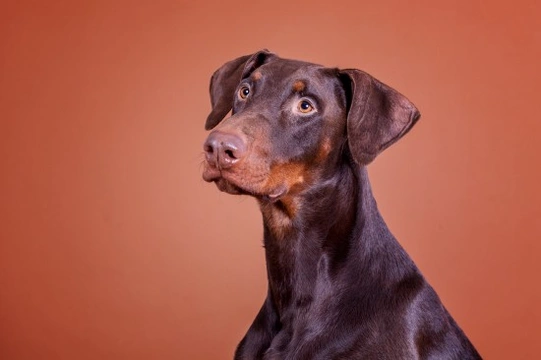
Training and managing a Doberman pinscher
The Doberman pinscher is a medium to large breed of dog with a distinctive black and tan coat. They are one of the most instantly recognisable of all dog breeds, and are also fairly commonly kept as pets, although their popularity has been on the wane slightly in recent years. Lithe, athletic and fast on their feet, the Doberman is highly intelligent and widely renowned for their skills as watch dogs and guard dogs. They are often portrayed in films and on television as aggressive, dominant and even dangerous, and while the Doberman when trained for such traits can certainly fulfil all of these stereotypes, they are also obedient, well-mannered and very responsive.
They are widely used in many countries as working dogs, fulfilling roles such as guarding, personal protection and security. They were once among the most common police dog breeds, although today the German shepherd and other shepherd dog varieties are preferred.
Due to their intelligence, receptiveness to training and attractive appearance, they appeal to many different types of people as pets, and indeed, the Doberman pinscher can make an excellent pet for the right owner and with the right training and management. However, they do need a knowledgeable, experienced handler and good ongoing training and management, and are not classed as one of the easiest dogs to take on for the first time or inexperienced owner.
In this article, we will look at the requirements for training and managing a Doberman pinscher effectively. Read on to learn more.
Basic requirements
The potential owner of a Doberman pinscher must have a thorough understanding of every aspect of dog training and ongoing management, and ideally, the Doberman should not be the first dog that they have trained. Dobermans are responsive and learn quickly, but their high intelligence also means that they are adept at keeping one step ahead of their trainer, and being able to keep up with this and look forwards to the next stage of training is essential.
Training a Doberman needs to be adaptive and forward thinking, and should be tailored to meet the needs and temperament of the individual dog, as not all Dobermans are the same! Dobermans become bored quickly and like to have something to do, and so keeping training progressive and interesting for the dog is a must.
Dominant and guarding traits
The Doberman does have a propensity to potentially become dominant if permitted to, and this can result in territorial and alpha-type behaviour in the adult dog if early training is ineffective. The Doberman is a natural guard and protector, and will take this role without any prior training or direction from the owner. In fact, the owner of the Doberman very much needs to work proactively from their earliest days with the dog to ensure that they do not become overly territorial, or aggressive with strangers.
The Doberman requires lots of early socialisation with other dogs in order to avoid later aggression with other dogs, and they should also be widely introduced to as many people as possible, in order to get them used to the presence of strangers and keep them from reacting negatively to strangers that might visit.
Breed traits and responsible breeders
When considering the purchase of a Doberman puppy, it is vitally important to choose a responsible breeder who is proactively breeding litters with good natures, stable characters, and no genetically inherited health problems.
Breeders who simply produce Dobermans that look nice with no thought paid to the temperament and traits of their dogs may risk breeding pups that will grow up to be hyperactive, aggressive, or difficult to train, which of course makes training and management much harder.
Be prepared to shop around to find a responsible breeder who can speak knowledgably about their dogs and breed lines, and who only breeds good natured, well-mannered dogs.
Positive reinforcement
For the vast majority of humanity’s history of dog ownership, negative reinforcement dog training was the norm, and considered to be the correct way of training and managing dogs, particularly working dogs. However, positive reinforcement training, which is a relatively modern take on dog training, is now most widely believed to be the kindest and most effective way of properly training the dog, and is the method that is used to greatest effect with the Doberman.
A combination of positive reinforcement, firm boundaries and patience is required to properly train the Doberman pinscher, and bad habits or insubordination should be nipped in the bud immediately before the dog begins to see them as the status quo. The breed is quick to learn, often quicker than their handlers realise, and training must be kept interesting and varied in order to hold the dog’s concentration.
Family interaction
The Doberman pinscher can make for an excellent family pet, regardless of the age of your children. Dobermans tend to be very loving, loyal and protective of their families, and will often bond strongly with the youngest members and forgive them the small mistakes in handling that might cause other dogs to become snappy.
However, this protective instinct can potentially become a problem if the dog sees it as their job to guard the children, and this can lead to problems when strangers or visitors are around, and so should be managed and corrected early on.
All of the family should be on board when it comes to training and managing the dog, and there should be strict rules in place about what the dog is and is not allowed to do, which all of the family respect and take part in.



